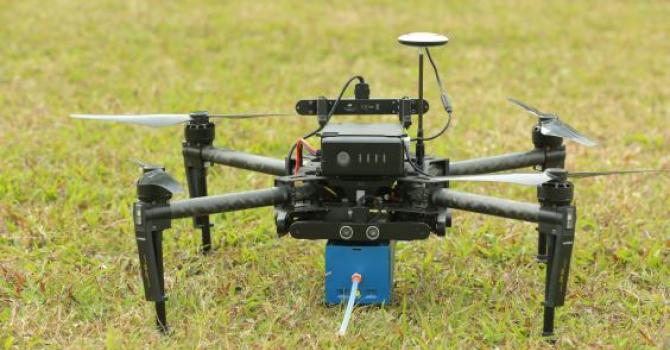CHINA DAILY: The SAR can offer hard and soft skills to GBA
Christine Loh says HK should be more proactive contributing to bay area and can offer expertise in environmental protection.
The level of political excitement about the Greater Bay Area has certainly gone up a notch.
Recent discussions at the National People’s Congress and Chinese People’s Political Consultative Conference in Beijing confirmed its importance from a political and economic standpoint, with top level backing.
The GBA consists of Guangdong, Hong Kong and Macao. Officials from these three places have been contributing to such a plan for some time, where the authorities exchanged ideas and considered drafts.
Guangdong Governor Ma Xingrui said the State Council was expected to announce the plan soon with emphasis on infrastructure connectivity to further facilitate the flow of people, information, goods and capital.
Shenzhen Mayor Chen Rugui suggested the creation of a national-level coordination mechanism to facilitate the implementation and the on-going development of the plan; and that there should be a special innovation and technology cooperation area.
Indeed, Guangdong and Shenzhen have been given the political mission to work with the two special administrative regions to turn the GBA into a world-class economic and business hub. President Xi Jinping’s expectation is for the GBA to nurture and attract talents to help the country realize its industrial and technological ambitions.
Some delegates to the NPC-CPPCC meetings have even suggested the creation of a special structure under the central government to promote and implement the GBA plan since it is not just a locally focused project but is meant to serve a bigger goal for the nation.
Hong Kong’s response at the meetings is naturally positive but could be more proactive in emphasizing how it can contribute to the success of the GBA. Suggestions from delegates have generally followed expected lines, such as helping to solve the land supply problem and expediting development of Qianhai in Shenzhen.
Hong Kong can consider other ideas too. Apart from focusing on promoting the exchanges in talents, logistics, capital and information, there should also be a focus on environmental protection. After all, they should not miss President Xi Jinping’s expressed desire that development of the GBA should be sustainable and environmentally conscious.
Hong Kong can offer a vision that involves enhancing ordinary people’s ecological consciousness. Environmental protection cannot be achieved by technology and infrastructure, even government mandates, without a change of behavior by citizens. An area where Hong Kong can take the lead is in food waste reduction and treatment. After all, the GBA is one of China’s premier culinary centers and tourism spots.
Hong Kong’s most recognizable icon happens to be “Big Waster” created by the Environment Bureau to encourage local people to reduce food waste. About 40 percent of the city’s municipal solid waste is related to food. Campaigns have successfully involved hundreds of stakeholders in the food and hospitality sector for the last few years. Moreover, Hong Kong’s first food waste-to-energy processing plant will be commissioned soon. It has already attracted a lot of attention from the mainland and Asia, since the technology is of interest to others.
Big Waster could play a social and environmental ambassadorial role for the GBA, which can also be promoted nationwide. The first step is for Hong Kong authorities to introduce Big Waster to their counterparts in the GBA and offer to share it as the region’s icon. Suitable artistic adaptations can be made should they be needed.
After all, all of China has a serious waste problem and food waste constitutes a significant part of it. Experts have estimated that food waste makes up about half of the municipal solid waste in Guangzhou and Shenzhen, while the percentages are even higher in Shanghai and Beijing.
It’s easy to imagine a new eating experience in the GBA would involve careful decisions on ingredients, quantity and mode of preparation which would cut wastage, and yet tasty, satisfying, healthy and also environmentally friendly. The whole dining experience can be designed to make customers feel positive. It will no longer be the old “eat as much as you want” restaurant promotion slogans of the past. It should be replaced with “Gluttony is out, smart eating is in” with the economy of resources and environmental concern in mind.
Beyond the tourism experience, ordinary people of the GBA can be involved together in community activities to reduce food waste. Schools can help by raising the awareness of students and through them, their families, to achieve the long-term goal of waste reduction at the source.
Big Waster has a message beyond food waste. With suitable adaptation, Big Waster is already spreading the message of resource and energy saving in Hong Kong. The adaptability of the icon is what can turn it into a national symbol created in Hong Kong which unites the GBA in an important socio-environmental mission with the potential to become an effective icon in the era of Beautiful China.
An international role for Big Waster? Why not? Icons such as Mickey Mouse and Hello Kitty can gain world renown, why not one with an important social message for the world! Our adorable Big Waster is fast proving to be a crowd puller and a natural photo op. It would not look out of place at our favorite tourist locations such as Hong Kong Disneyland, Ocean Park and other high tourist concentration districts spreading its positive message.




